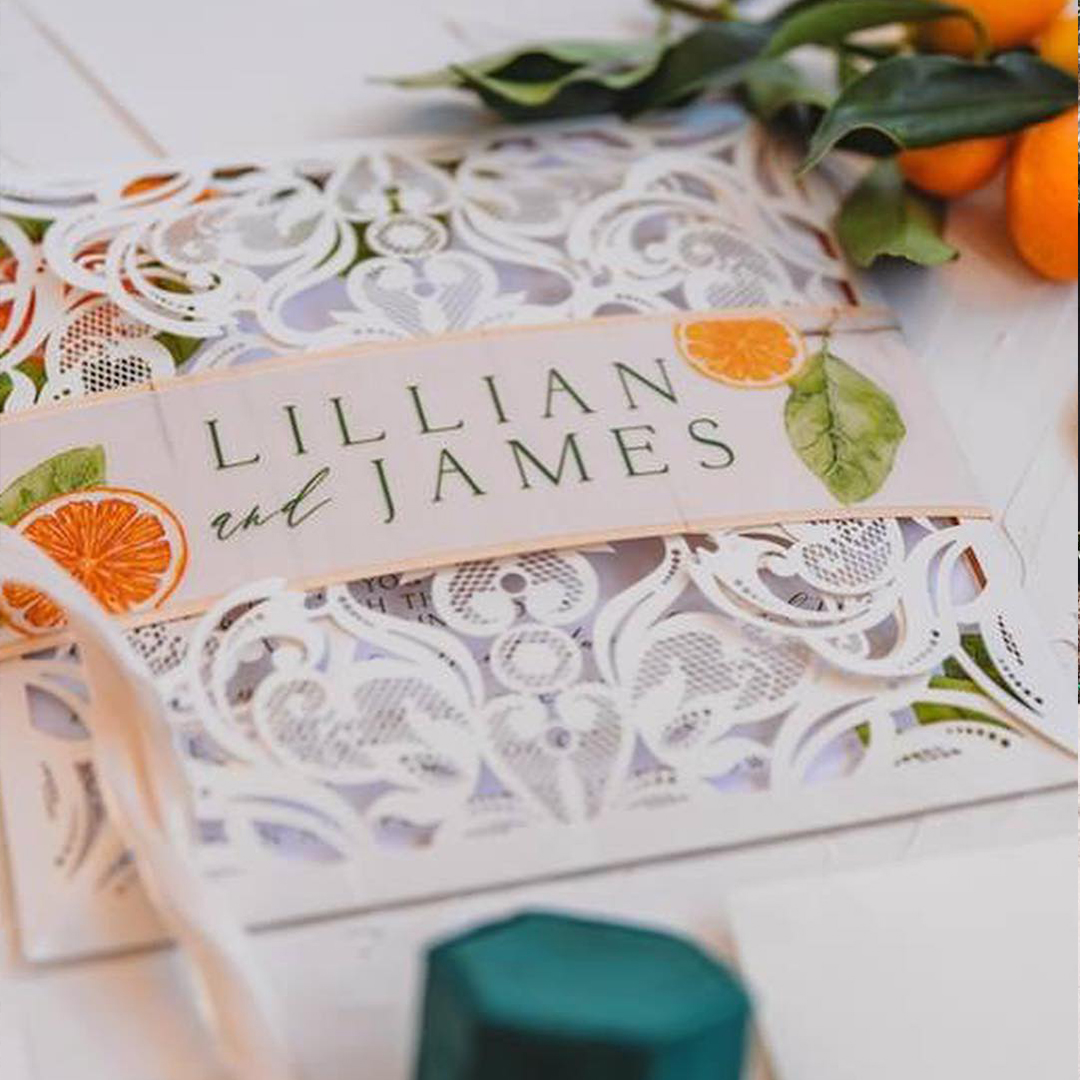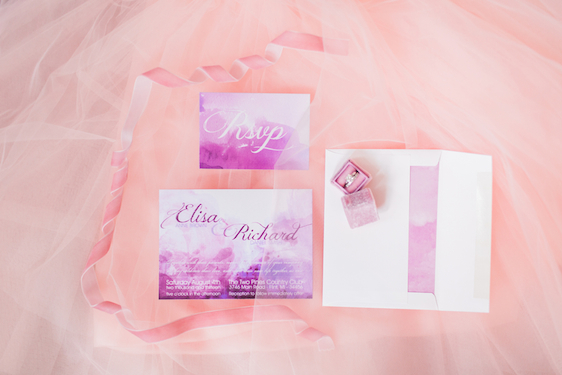Wedding invitation wording 101
Now that you’ve picked out your stationary, it’s time to take on wedding invitation wording — whether you want to keep the wording classic and traditional or creative and whimsical is up to you, but whatever route you choose, there are still basic elements that should be included no matter what.
The good news is that wedding invitation etiquette rules aren’t that complicated, after all. The rules are actually much simpler and straightforward than you think. And no matter the case, they’re there to serve as a guidelines. The most important rule of all is that you create a beautiful wedding invitation that represents you, your love and the big day to come (and communicates the vital details of the wedding) – so feel absolutely free to riff off these wedding invitation wording rules to create your own.
To help guide you, we’re breaking down what each line means and what it typically includes.
All wedding invitations should include the following elements:
- Who’s hosting
- The request to come to the wedding
- The names of the bride and groom
- The date and time
- The location
- Reception information
- Dress code
- Separate RSVP card
Take on Wedding Invitation Wording Line by Line
The Host Line: Who’s Hosting
Traditionally, the bride’s parents are the hosts of the wedding, and are named at the top of the invitation, even for very formal affairs. However, including the names of both sets of parents as hosts is a gracious option no matter who foots the bill. Also, more and more couples these days are hosting their own weddings, or do so together with their parents.
If it’s a collaborative affair hosted and paid for by the bride, groom and both sets of parents, you can also use “Together with their parents, Emma and Jax request the pleasure of your company …”
What If Any Parents are Deceased?
If you want to include the name of a parent who is deceased, you’ll need to rearrange things a bit, as someone whose passed can’t actually serve as a host. An alternate way, then, to include a deceased parent just means rearranging the wording a bit. Try this, for example:
Julia French, daughter of Mr. Adam French and the late Iris French,
and
Austin Mahoney, son of Mr. Camden and Elizabeth Mahoney,
request the honor of your presence
at their wedding
on the fifth of May, two thousand seventeen
at one o’clock in the afternoon
The Reagan Library
Simi Valley, California
Dinner & dancing to follow
Black tie required
What to Do If Any Parents are Divorced and/or Remarried
If the bride or groom’s parents are divorced and you want to include both as hosts, you can include them all, just keep your each parent on a separate line. If you’re going to include the name of stepparent, keep it on the same line. It might seem complex at first, but all it requires is a few more lines. This is an example of a bride with divorced (and remarried) parents’ wedding invitation wording:
Dr. Vance and Elizabeth Gregory
and Mr. James Abner and Lydia Abner
and Mr. Harold and Jane Hyland
invite you the wedding of their children
Amy Abner and Charles Hyland01.06.18 | 4 p.m.
Our Lady Queen of Angels Catholic Church
Newport, California
Reception immediately after
The Request Line: Please Come!
There are many ways to ask for the pleasure of your guests’ company. Here are few options:
-
“the pleasure of your company”
-
“at the marriage of their children”
-
“would love for you to join them”
-
“invite you to celebrate with them”
-
“honour of your presence”
(Note: The British spelling of “honour” traditionally indicates the ceremony will be held in a church or another house of worship.)
The Names of Bride and Groom
If there names haven’t been included in the host line, they should still take center stage a few lines down. No one would forget to add this to a wedding invitation, of course, but you might be wondering whose name should go first on a wedding invitation? Traditionally the name of the bride always precedes the groom’s name. Formal invitations issued by the bride’s parents refer to her by her first and middle names, the groom by his full name and title; if the couple is hosting by themselves, their titles are optional.
For a same-sex marriage, of course, the traditional rule of woman first and man second isn’t applicable. You can choose to go in alphabetical order or choose what sounds better. Whether it’s “Emily and Zara” or “Zara and Emily,” it’s going to be lovely either way.
The Date and Time
For formal weddings, everything is written out in full (no numerals). The year is optional (the assumption being your wedding is on the nearest such date). Time of day is spelled out using “o’clock” or “half after five o’clock.” The use of a.m. or p.m. is optional. For casual weddings, numerals are fine.
The Location
The street address of a venue is not usually needed, unless omitting it would lead to confusion or your wedding is taking place at the host’s home. The city and state should be written out in full in either case.
Reception Information
Very formal invitations include this information on a separate card. Otherwise, it can be printed on the wedding invitation itself if there is room; if the ceremony and reception are held in the same location, you may print “and afterward at the reception” or “reception immediately following.” When the reception is elsewhere, the location goes on a different line. Include the time if the wedding reception is not immediately following the ceremony.
Dress Code
Wedding invitation etiquette dictates that the dress code, if it’s to be included on the invitation, is is the lower right hand corner of the invitation. If you don’t include a note on attire, the invitation will indicate the dress code. For example, if the invitation is very fancy, guests will likely anticipating a formal, black-tie affair, or conversely, if the invitation on the simpler side, that indicates a more casual dress code.
Separate RSVP Card
Most couples choose to include a separate response card for guests to fill out and return in the mail. You also have the option of having people RSVP via your wedding website. If that’s the case, include the website address on a separate card, just as you would with an RSVP card, and indicate that guests can let you know if they can come directly on the site.





